National
77% of Canadians want immediate election amid Trump tariff threats: poll
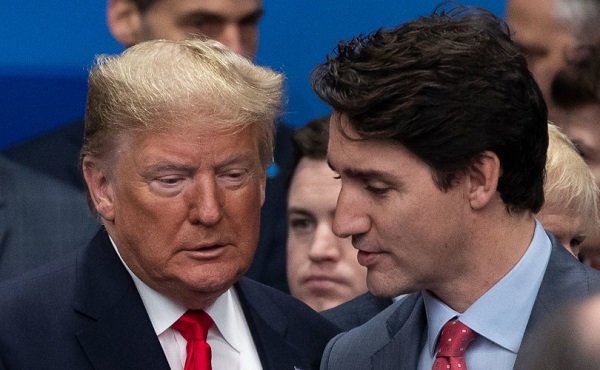
From LifeSiteNews
Over three quarters of Canadians polled want an immediate election to address U.S. President Donald Trump’s 25% tariff threat which could go into effect as early as February 1.
A new polls has found that 77 percent of Canadians desire an immediate election to deal with U.S. President Donald Trump’s tariff threat.
According to a January 21 poll by Ipsos, over three quarters of Canadians want an immediate election to address Trump’s 25 percent tariff threat which could go into effect as early as February 1 if certain demands are not met.
“We need a federal election immediately, so we have a Prime Minister and government with a strong mandate to deal with the tariff threat from President Trump,” 77% of the polled Canadians agreed.
Trump has threatened to put 25% tariffs on both Canadian and Mexican exports unless the countries take serious action against illegal drug smuggling and immigration which occurs at their borders.
Initially, the tariff was to take effect on his first day of office, January 20, but it has now been hinted by Trump to be slated for February 1, leaving Canadians under two weeks to respond to his demands.
The poll, which interviewed 1,001 Canadians, further found that 82 percent support Canada responding with its own tariffs on American goods entering the country.
Similarly, 55 percent of Canadians believe the tariff threat is a bluff to force Canadians to strengthen their borders and increase defense spending.
Prime Minister Justin Trudeau, who is slated t0 resign once a new Liberal leader is selected, has told Canadians that Liberals are considering all options, including retaliatory tariffs.
“We will not hesitate to act,” Trudeau said at a meeting of the Council on Canada-U.S. Relations on January 17. “We will respond and, I will say it again, everything is on the table.”
However, all plans for retaliation are paused as Trudeau has suspended Parliament until March 24 by which time the Liberal Party will have selected a new leader.
Many Canadians have pointed out that this essentially cripples Canada while Liberals sort out problems within their party.
Yesterday, Conservative Party leader Pierre Poilievre demanded that Trudeau immediately reconvene Parliament on an “emergency” basis so Canada can deal with looming tariff threats.
“Canada is facing a critical challenge. On February 1st we are facing the risk of unjustified 25% tariffs by our largest trading partner that would have damaging consequences across our country,” wrote Poilievre in a news release Tuesday.
Poilievre recalled that the United States under Trump says it wants “to stop the illegal flow of drugs and other criminal activity at our border,” and it will use tariffs against Canada as a way of forcing compliance with U.S. demands. Poilievre also pointed to the fact that the Trudeau government has admitted “their weak border is a problem,” which is “why they announced a multibillion-dollar border plan.”
“Canada has never been so weak, and things have never been so out of control. Liberals are putting themselves and their leadership politics ahead of the country. Freeland and Carney are fighting for power rather than fighting for Canada,” Poilievre charged, demanding that Trudeau reopen Parliament immediately “to pass new border controls, agree on trade retaliation and prepare a plan to rescue Canada’s weak economy.”
Crime
How Chinese State-Linked Networks Replaced the Medellín Model with Global Logistics and Political Protection

Zhenli Ye Gon, aka “El Chino” ran a meth empire from Mexico City supplied and set up by a Chinese Communist Party linked conglomerate called Chifeng Arker.
The Rise of ‘El Chino’ — A New Blueprint for Beijing’s Narco-Industrial Power
In the 1980s and ’90s, U.S. agents dismantled the Medellín Cartel not by chasing Pablo Escobar directly, but by targeting the structure around him—the lawyers, accountants, and corporate fixers who laundered his fortune. For Don Im, a key figure in the DEA’s inner circle during that campaign, it was a hard-won lesson that stayed with him across decades of global narcotics investigations.
“You can take down the cartels all you want—cartels are easy to replace,” Im told The Bureau. “It’s the bankers, the businessmen, the lawyers, and the accountants that are harder to get. Because they’re the inconvenient targets.”
By “inconvenient,” Im means politically protected. Ultimately, geopolitically protected.
Today, he sees history repeating itself—only on a far more dangerous scale. Where Colombian cocaine traffickers once flooded American cities, Chinese-backed methamphetamine and fentanyl empires now dominate, shielded by Party-state logistics and financial infrastructure. The operations are more sophisticated—executed with near impunity.
“I worked with Steve and Javier,” Im said, referencing DEA agents Javier Peña and Steve Murphy, the duo immortalized in Narcos. “And how Pablo was taken down? His accountants and lawyers were the first to be removed. That made Pablo a bigger, more vulnerable target. Unless we go after the facilitators—accountants, lawyers, businessmen, and corrupt government officials—you’re never going to affect the illicit drug trade or the money it generates.”
That insight brings Im back to a dilemma that continues to trouble him, even three years into retirement: how to dismantle narco empires entrenched in Canada and Mexico, shielded not only by senior Chinese Communist officials profiting from the fentanyl trade, but also by troubling ties to Western political figures. The conundrum, he says, is captured in what some DEA veterans view as the most overlooked turning point in global narco-trafficking—the rise of Chinese-Mexican pharmaceutical magnate Zhenli Ye Gon.
Now imprisoned in Altiplano, Mexico’s maximum-security fortress, Ye Gon was a legendary figure in Las Vegas—dubbed the “Mexican-Chinese whale” for his extravagant losses at casinos like the Venetian, where he gambled over $125 million between 2004 and 2007, all while running a billion-dollar methamphetamine empire.
His ascent in Western Hemisphere drug trafficking was too rapid to be accidental.
“I think he arrived in Mexico City in 1998 or 1999,” Im recalled. “And then within two years, he received Mexican citizenship from President Vicente Fox. So that shows you how influential and effective he was in penetrating the highest levels of the Mexican government.”
Once established in Mexico, his pipeline to CCP-linked suppliers began flooding Mexican ports—with a high-end production facility built with technical assistance from China.
“He’s still in prison asking for another $270 million back—after $207 million was already seized,” Im said, his voice tightening with outraged disbelief. “And he’s still sitting there. He was the largest pseudoephedrine importer from China into Mexico. His companies and infrastructure are still intact.”
When asked who is running the infrastructure today, Im didn’t hesitate.
“His associates and his family members.”
“He imported seven or eight high-powered, top-of-the-line pill press machines from Germany—each capable of cranking out at least half a million pills every two days,” Im said. “The Mexican authorities seized one.”
That leaves a troubling question: Have the remaining pill presses continued producing fentanyl-laced counterfeit oxycodone pills for the past decade—operated by Ye Gon’s family members and Chinese-linked criminal associates, in alliance with the Sinaloa Cartel—even as he sits in prison, with impeccable supply ties to Chinese Communist Party-controlled precursor firms still intact?
The Bureau’s review of DEA records and U.S. extradition documents suggests Ye Gon’s operations extended far beyond chemicals and a single Mexican factory built with assistance from a Chinese precursor supplier. His financial network revealed a laundering architecture as vast and deliberate as his synthetic drug supply chain.
According to DEA calculations, Ye Gon’s company illegally imported nearly 87 metric tons of a key methamphetamine precursor over just a few years—enough to yield more than 36 metric tons of high-purity meth. At conservative estimates, the precursor was worth over USD $188 million. Once converted and sold on American streets, the finished product could generate more than USD $724 million.
Chemical Supply Meets Political Shield: Chifeng Arker’s Role in the Fentanyl Pipeline
On September 24, 2003, Ye Gon’s Mexico-based firm, Unimed México, signed a supply contract with Chifeng Arker, a company based in Inner Mongolia with links to Shanghai. The deal called for the annual purchase of at least 50 metric tons of a chemical used to manufacture pseudoephedrine—a primary precursor in the production of methamphetamine. Once processed, the substance forms the essential base for high-purity crystal meth.
While Washington remains rightly focused on the toll of fentanyl, Im says the devastation wrought by methamphetamine is comparable. Beyond generating revenue to fund fentanyl production, meth ravages communities and drains health care and policing budgets in blighted states.
The scale at which Ye Gon operated—importing dozens of tons of precursors and building a high-end production plant—could not realistically have been achieved without tacit support from elements of the Chinese state.
In effect, Chifeng Arker agreed not only to supply enormous volumes of this chemical, but also to support Ye Gon in running his Mexican production plant.
“The contract also called for Chifeng Arker to provide technical support to aid Unimed in the actual production of pseudoephedrine, to include ‘workshop housing design,’” U.S. government extradition records state. “In October 2005, Ye Gon began to build and equip a manufacturing plant in Toluca, Mexico, with the help of Chinese advisors, as contemplated by the September 2003 contract with Chifeng Arker.”
Both Ye Gon and his chief chemist, Bernardo Mercado Jiménez, signed the agreement.
Court records suggest Ye Gon and a team of Chinese workers were directly involved in methamphetamine production.
“Chinese workers helped with the start-up of that plant, as contemplated by the Chifeng Arker contract,” states a 2013 U.S. District Court extradition filing from West Virginia. The filing continues: “According to workers at the plant, the facility received daily shipments of a white, hard chemical substance that was heated with hydrochloric acid to obtain a white crystalline powder. … At the end of the day, that powder was bagged and driven away by Ye Gon or his personal driver.”
Pursuant to the contract, shipments of precursor chemicals flowed from China to Mexico between 2004 and 2006. After mid-2005, Mexico revoked its license amid a chemical diversion crackdown. Ye Gon and Chifeng Arker shifted to more covert methods.
Evidence from U.S. court and extradition records shows that at least four large illicit shipments—totaling tens of thousands of kilograms—were dispatched in 2005 and 2006. To avoid scrutiny, they were routed through a Hong Kong shell company called Emerald Import & Export and labeled misleadingly.
During this period, Chifeng Arker effectively served as Ye Gon’s offshore factory, supplying raw materials for meth production.
The financial connection ran just as deep. Ye Gon used Mexican currency exchanges—casas de cambio—to launder payments to Chifeng Arker. In one documented instance, a single exchange processed three payments totaling $2 million USD to Arker, timed to coincide with the Hong Kong shipments.
Corporate record searches show that Chifeng changed its ownership structure after scrutiny from U.S. authorities. Its current parent company in Shanghai—publicly traded in Hong Kong—is nearly 50 percent owned by state-controlled or linked pharmaceutical firms, with 29 percent held by the Shanghai State-owned Assets Supervision and Administration Commission (SASAC).
This structure underpins what DEA experts like Im argue: that major figures such as Zhenli Ye Gon—and, even more so, his Chinese Canadian counterpart Tse Chi Lop—serve as “command and control” for the Western Hemisphere’s fentanyl and money laundering networks. Their global narco empires, Im says, operate with the knowledge, protection, and involvement—sometimes directly—of senior Chinese Communist Party officials.
The staggering scale of these synthetic narco empires—decentralized across North America, yet rooted in state-directed chemical output from Communist Party-controlled or Party-influenced firms such as Chifeng—is reflected in the DEA affidavit that led to Ye Gon’s conviction.
When Mexican prosecutors raided his Mexico City residence in 2007, they found $205.5 million in U.S. cash stacked in suitcases, closets, and false compartments. Another $2 million in foreign currency and traveler’s checks was seized along with luxury goods, high-end jewelry, and receipts from Las Vegas casinos. Federal agents also confiscated seven firearms, including a fully automatic AK-47.
Equally disturbing was a handwritten note found among Ye Gon’s seized records. “Due to the detention of the flour, my associates and I had some problems,” it read. “I have contact with customs. Call me to work.” Investigators interpreted “flour” as code for a seized chemical shipment, and “books” as shorthand for drug proceeds. The reference to “contact with customs” pointed to a corrupt facilitator within Mexico’s border control system—an insider positioned to keep the chemical pipeline open. For veteran DEA agents, it was a textbook indicator of entrenched, systemic corruption.
Federal agents later executed a search warrant at UNIMED’s corporate headquarters in Mexico City. There, they discovered an additional $111,000 in cash, along with records for bank accounts in the United States, China, and Hong Kong. Wire transfer receipts and confirmation pages linked UNIMED to Mexican currency exchanges, detailing the flow of funds from Mexico into accounts across the United States and Europe.
“From a law enforcement standpoint,” the affidavit stated, “these casas de cambio have been widely used by drug trafficking organizations in Mexico and South America to insert their illegal drug proceeds into the legitimate world financial systems in an attempt to disguise the origin of the money and launder its criminal history.”
The DEA affidavit reads like an early blueprint—one that foreshadowed the global expansion of Chinese money laundering and chemical dominance over synthetic drug production.
It documents how, by 2004, escalating U.S. enforcement and tighter international controls on precursors like pseudoephedrine forced methamphetamine production out of the United States and into Mexico. By 2006, Mexican authorities had seized what were then the two largest meth labs in the Western Hemisphere. These industrial-scale operations were directly linked to trafficking routes into the United States and supplied by Chinese precursor chemicals. They marked the emergence of a decentralized manufacturing model—one that has since migrated north and now operates inside Canada.
The affidavit also provides forensic insight into how, beginning in the early 2000s, Chinese state-linked traffickers assumed control over global money laundering for ultra-violent Latin American cartels.
While Ye Gon’s reputation as a high-rolling gambler—losing at least $125 million in Las Vegas casinos between 2004 and 2007—is well documented, what appears to have gone unreported is that the DEA’s Las Vegas field office obtained intelligence directly tying his casino activity to laundering operations for a major Mexican drug cartel.
“A Mexican organized crime group began blackmailing YE GON in México,” stated an affidavit by DEA Special Agent Eduardo A. Chávez. “According to YE GON, the group wanted to store cash at YE GON’s residence in México City. In addition to storing cash, the group wanted YE GON to launder their money. YE GON told the source that he knew the money in his house was ‘dirty money’ and the proceeds of narcotics trafficking. YE GON told the source that he continually received threats against himself and his family, so he believed that he had no choice but to launder the money. YE GON told the source that the traffickers instructed him to use his bank accounts to send the money to Las Vegas, where he could launder it.”
It’s just one vivid example of the deep integration between Chinese money launderers and Mexican cartels. While the cartels clearly operate with a brutality that commands respect—and sometimes fear—from their Chinese partners, ultimately, it is the Chinese networks that reign supreme: they control the finance, the chemicals, and the decentralized factory components underpinning the global trade. As Ye Gon’s case indicates, they sit at commanding heights.
Target the Enablers or Lose the War
The case documented a tectonic shift: the outsourcing of cartel financial operations to Chinese actors—and a new era of synthetic narco-capitalism governed not by territorial control, but by logistical mastery.
DEA agents tracking that shift—the transfer of global laundering and chemical command to China—soon formalized their findings within a strategic U.S. intelligence framework. While Don Im was leading DEA financial operations in New York, the U.S. government launched an initiative known as Linkage, designed to map the evolving East Asian narcotics supply architecture. The strategy identified how Chinese and Southeast Asian syndicates operated like a chain of interlocking specialists in chemical production, international transport, and financial laundering.
“Linkage was an initiative to identify the entire supply chain from the United States back into Southeast Asia,” Im recalled. “They called it Linkage because the way Chinese and other Asian traffickers were operating was like a chain: independent manufacturers, independent transporters, independent distributors—all linked. They didn’t work for one another, they worked with one another, relying on their specialties—production, transportation, smuggling, distribution.”
The other side of the counter-narcotics effort was the Linear Initiative, which attacked the supply chain flowing from Bolivia, Peru, and Colombia into the U.S. Today, those organizations outsource laundering to Chinese brokers—who need the cash, while the cartels need access to their polydrug profits in North America, Europe, and Australia.
This led directly to one of the most controversial cases of the era: HSBC.
Operation Royal Flush—an extension of both Linkage and Linear—targeted the financial backbone of these networks by tracing dirty cash upstream to their command centers.
“We targeted a South American bank and ended up identifying HSBC as essentially just blatantly violating anti-money laundering laws, rules, and regulations,” Im said. “We realized they were helping facilitate not just Mexican cartels, but South American cartels, Russian organized crime, Chinese organized crime, Italian organized crime—all throughout the world. And they just got a slap on the wrist: a $1.9 billion fine.”
The case continues to reverberate inside the DEA—especially after agents watched with disbelief as Canadian authorities recently imposed just a $9 million fine on TD Bank, despite mounting evidence of large-scale fentanyl money laundering through its North American branches, orchestrated from Toronto. For years, the activity appeared to proceed largely unchecked, even as Canadian police and senior political officials were warned of systemic vulnerabilities by the country’s financial intelligence agency, FINTRAC. Only after DEA investigators, working through the U.S. Department of Justice, advanced a sweeping probe did the true scale of the operation begin to surface.
According to sources including former U.S. State Department investigator David Asher, the case involved Chinese international students and underground bankers funneling drug cash into bank branches across the Tri-State area. Investigators traced “command and control” links to the Triad syndicate led by Tse Chi Lop—an empire rooted in Toronto and Vancouver, with longstanding ties to the Chinese Communist Party and direct links to precursor chemical factories that generate GDP for Beijing.
This brings Don Im’s most troubling observations into sharp focus—particularly Ottawa’s handling of the TD Bank case, and his deeper concern that the only effective way to confront fentanyl trafficking is to follow the money all the way to the top of political and corporate power. But that, he reiterates, is also the path into politically “inconvenient” territory.
In many ways, Im believes, following the money to the highest levels of Western enablers—once so effective in dismantling Pablo Escobar’s empire—has become a lost art. And one, he argues, that must be revived.
What he now calls for is a no-holds-barred international campaign—led by informed citizens and coordinated governments—from Vancouver to West Virginia.
“These same cartels, brokers, and Chinese precursor suppliers behind the fentanyl crisis in North America are also pushing cocaine, heroin, and meth in Europe and Australia—and Canada,” Im said.
The DEA must expand its global presence, Im argues, and embed sources deep inside the very organizations responsible for poisoning the West.
“And the nonsense view that only fentanyl should be targeted is absolutely mind-boggling,” he said. “Profits from heroin, cocaine, methamphetamine are used to produce fentanyl.”
For Im, the stakes are no longer merely criminal—they are existential. The West, he believes, is locked in an asymmetric conflict with Beijing.
“The Chinese Communist Party at all levels has been aware of the magnitude of global drug trafficking and, specifically, the cheap and easily available liquid capital and cash that can be purchased, bartered, converted, invested for any beneficial CCP-sponsored initiative—directly or indirectly—and satisfies elements of corruption at every level,” Im told The Bureau. “This is in line with the 100-year vision to expand their influence—not to destroy the West but to plunder and exploit the wealth, technology, and abundant liquid capital from the massive drug trade in North American and European consumer cities for their benefit.”
Next in this series: Narco-Funded Belt and Road
The Bureau is a reader-supported publication.
To receive new posts and support my work, consider becoming a free or paid subscriber.
Editor’s Note: Don Im shares this message in conjunction with The Bureau’s ongoing investigative series, which aims to inform international policy responses to the Chinese Communist Party’s role in facilitating a hybrid fentanyl war.
“I followed and worked with many incredible agents, task force members, and intelligence analysts from the DEA, FBI, legacy U.S. Customs, IRS, RCMP, and DOJ prosecutors—professionals who dedicated their lives to combatting Asian organized crime. These unsung heroes risked their lives. Two DEA Special Agents—Paul Seema and George Montoya—gave their lives in 1988, and DEA Special Agent Jose Martinez was wounded in this war. Their dedication, efforts, and impact live on in the criminal data systems of the various agencies.”
Invite your friends and earn rewards
Automotive
Canada’s EV house of cards is close to collapsing

 By Dan McTeague
By Dan McTeague
Well, Canada’s electric vehicle policies are playing out exactly as I predicted. Which is to say, they’re a disaster.
Back in November, in the immediate aftermath of Donald Trump’s re-election, I wrote in these pages that, whatever else that election might mean for Canada, it would prove big trouble for the Justin Trudeau/Doug Ford EV scam.
The substance of their plot works like so: first, the federal and provincial governments threw mountains of taxpayer dollars in subsidies at automakers so that they’d come to Canada to manufacture EVs. Then Ottawa mandated that Canadians must buy those EVs — exclusively — by the year 2035. That way Ford and Trudeau could pat themselves on the back for “creating jobs,” while EV manufacturers could help themselves to the contents of our wallets twice over.
But the one variable they didn’t account for was a return of Donald Trump to the White House.
Trump had run on a promise to save America from their own back-door EV mandates. Though Kamala Harris had denied that any such mandates existed, they did, and they were founded on two acts of the Biden-Harris administration.
First, they issued an Executive Order setting significantly more onerous tailpipe regulations on all internal combustion engine (ICE) vehicles, with the explicit goal of ensuring that 50 percent of all new vehicles sold in America be electric by 2030.
Second, they granted California a waiver to make those regulations more burdensome still, so that only EVs could realistically be in compliance with them. Since no automaker would want to be locked out of the market of the most populous state, nor could they afford to build one set of cars for California (plus the handful of states which have — idiotically — chosen to align their regulations with California’s) and another set for the rest of the country, they would be forced to increase their manufacture and sale of EVs and decrease their output of ICE vehicles.
Trump’s victory took Canada’s political class completely by surprise, and it threw a spanner into the workings of the Liberals’ plan.
That’s because there just aren’t enough Canadians, or Canadian tax dollars, to make their EV scheme even kinda’ work. Canada’s unique access to the world’s biggest market — America — was a key component of the plan.
After all, vehicles are “the second largest Canadian export by value, at $51 billion in 2023, of which 93 percent was exported to the US,” according to the Canadian Vehicle Manufacturers Association, and “Auto is Ontario’s top export at 28.9 percent of all exports (2023.)”
It further depended on Americans buying more and more EVs every year. But since, when given a choice, most people prefer the cost and convenience of ICE vehicles, this would only work if Americans were pushed into buying EVs, even if in a more roundabout way than they’re being forced on Canadians.
Which is why the plan all began to unravel on January 20, the day of Trump’s inauguration, when he signed Executive Order 14154, “Unleashing American Energy,” which, among other things, rescinded Joe Biden’s pro-EV tailpipe regulations. And it has continued downhill from there.
Just last week, the US Senate voted to repeal the Biden EPA’s waiver for California. Not that that’s the end of the story — in the aftermath of the vote, California governor Gavin Newsom vowed “to fight this unconstitutional attack on California in court.” (Though don’t be surprised if that fight is brief and half-hearted — Newsom has been trying to leave his lifelong leftism behind recently and rebrand as a moderate Democrat in time for his own run at the White House in 2028. Consequently, being saved from his own EV policy might only help his career prospects going forward.)
But it’s worth noting the language used by the Alliance for Automotive Innovation, which represents car companies like Toyota, GM, Volkswagen and Stellantis (several of whom, it should be noted, have received significant subsidies from the Liberal and Ford governments to manufacture EVs), which said in a statement, “The fact is these EV sales mandates were never achievable.”
That’s worth repeating: these EV sales mandates were never achievable!
That’s true in California, and it’s true in Canada as well.
And yet, our political class has refused to accept this reality. Doug Ford actually doubled down on his commitment to heavily subsidizing the EV industry in his recent campaign, saying “I want to make it clear… a re-elected PC government will honour our commitment to invest in the sector,” no matter what Donald Trump does.
Except, as noted above, Donald Trump represents the customers Doug Ford needs!
Meanwhile, our environmentalist-in-chief, Mark Carney, has maintained the Liberal Party’s commitment to the EV mandates, arguing that EVs are essential for his vacuous plan of transforming Canada into a “clean energy superpower.” How exactly? That’s never said.
These are the words of con artists, not men who we should be trusting with the financial wellbeing of our country. Unfortunately, in our recent federal election — and the one in Ontario — this issue was barely discussed, beyond an 11th-hour attempted buzzer-beater from Pierre Poilievre and a feeble talking point from Bonnie Crombie about her concern “that the premier has put all our eggs in the EV basket.”
Meanwhile, 2035 is just around the corner.
So we can’t stop calling attention to this issue. In fact, we’re going to shout about our mindless EV subsidies and mandates from the rooftops until our fellow Canadians wake up to the predicament we’re in. It took some time, but we made them notice the carbon tax (even if the policy change we got from Carbon Tax Carney wasn’t any better.) And we can do it with electric vehicles, too.
Because we don’t have the money, either as a nation or as individuals, to prop this thing up forever.
Dan McTeague is President of Canadians for Affordable Energy.
-
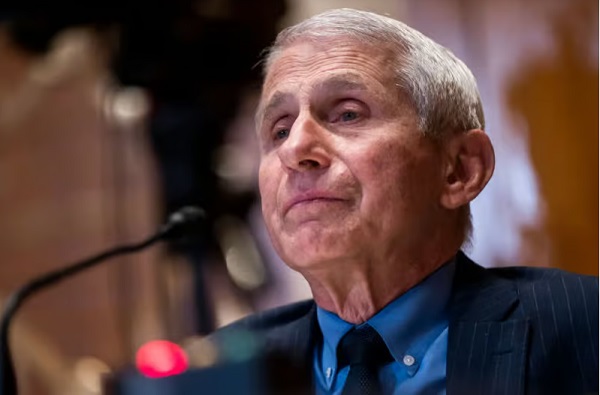
 Brownstone Institute17 hours ago
Brownstone Institute17 hours agoAnthony Fauci Gets Demolished by White House in New Covid Update
-
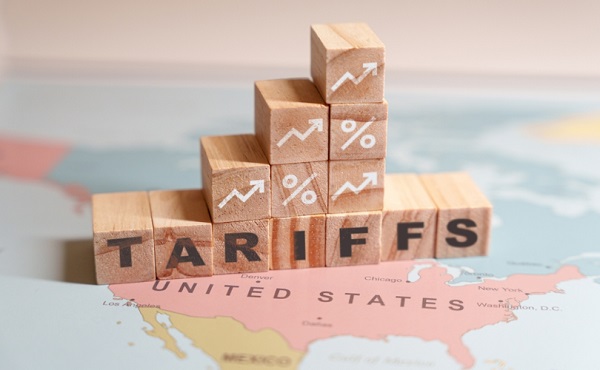
 Business18 hours ago
Business18 hours agoSobering reality check – Trump is right: Canada’s economy can’t survive a fair trade agreement with the US
-
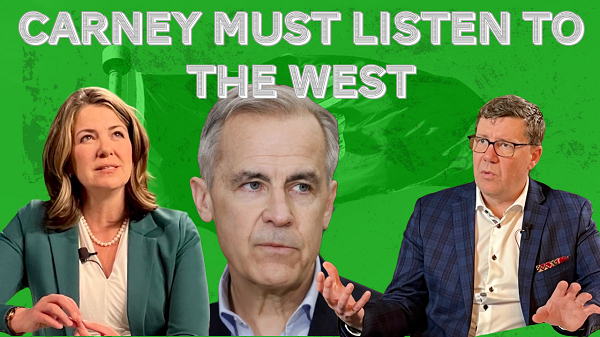
 Business19 hours ago
Business19 hours agoOttawa must listen to the West
-

 Crime16 hours ago
Crime16 hours agoMexican Cartels Expanding Operations in Canada, Using Indigenous Reserves as Factory Hubs
-

 Fraser Institute20 hours ago
Fraser Institute20 hours agoDeclining stature of foreign affairs minister underscores Canada’s waning influence on world stage
-

 Automotive5 hours ago
Automotive5 hours agoCanada’s EV house of cards is close to collapsing
-
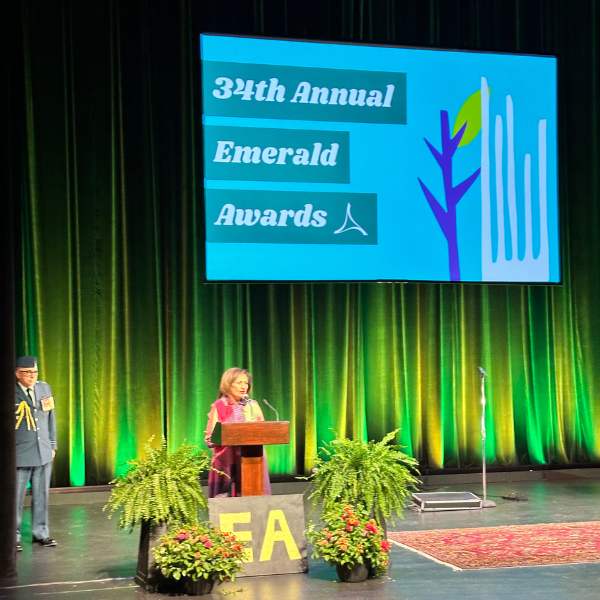
 Alberta2 days ago
Alberta2 days agoAlberta’s Environmental Changemakers Shine at the 2025 Emerald Awards
-

 Banks2 days ago
Banks2 days agoLiberal border bill could usher in cashless economy by outlawing cash payments





